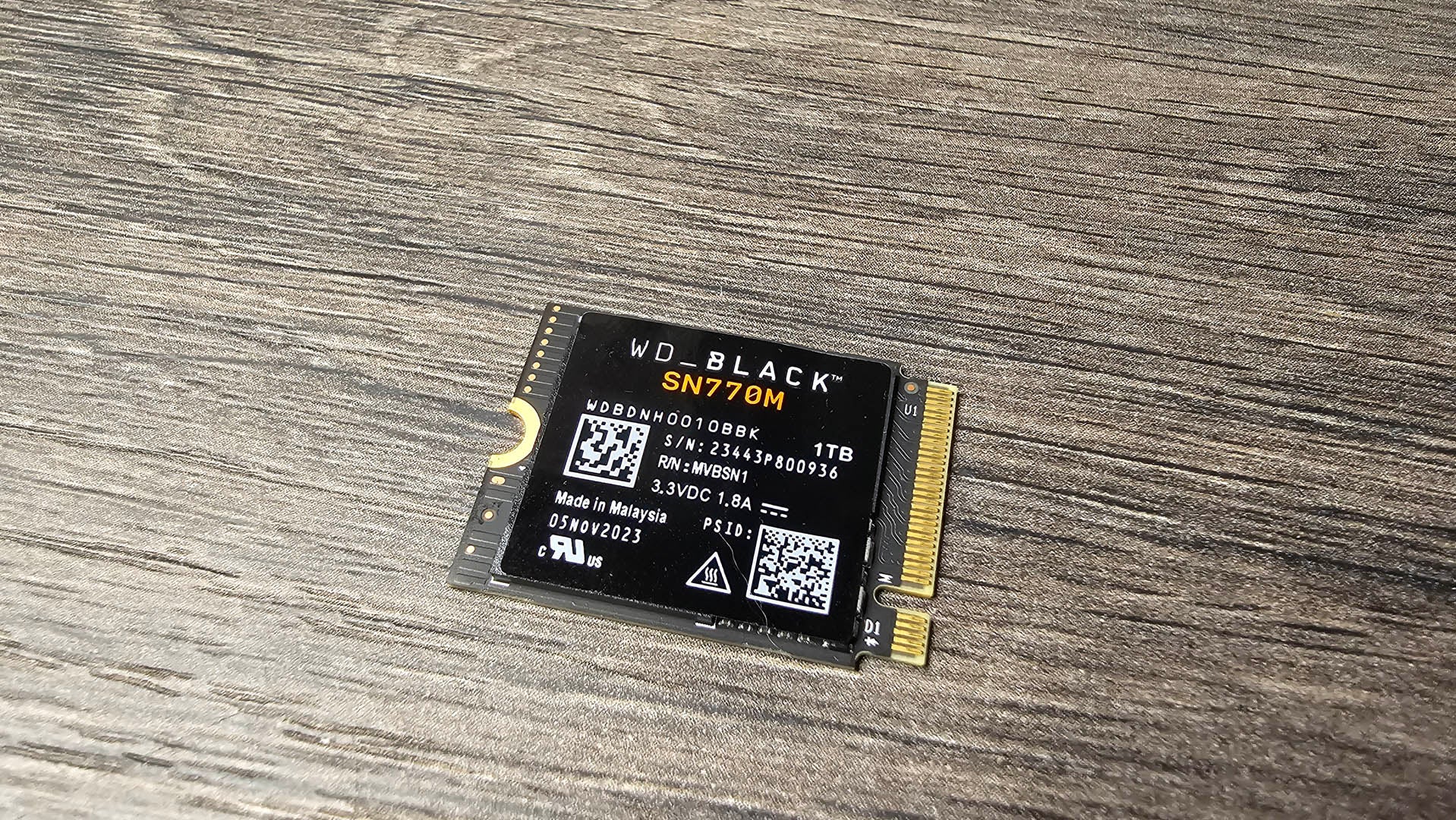Acer Predator CG7 Review
A TV-sized gaming monitor
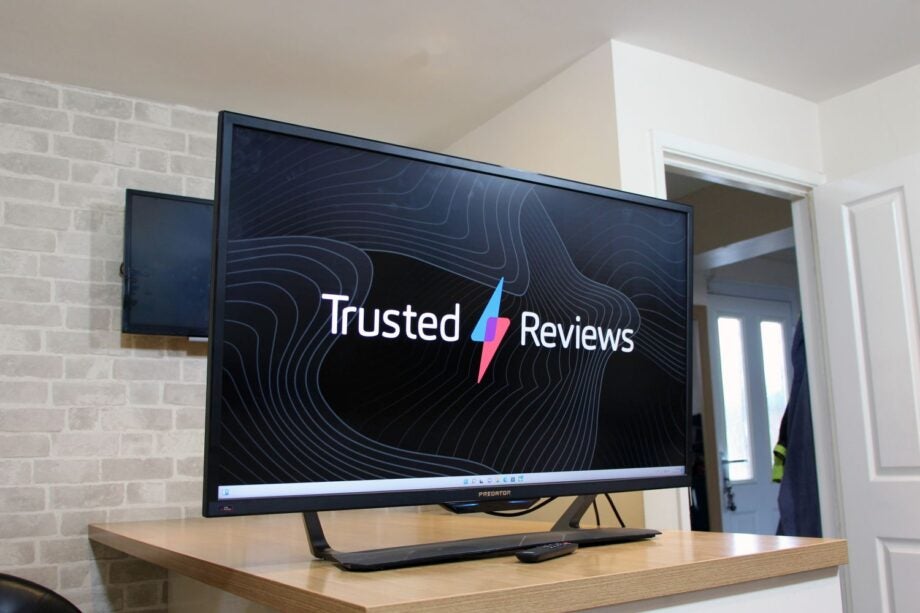
Verdict
The Acer Predator CG7 delivers great colours and contrast alongside the size and 144Hz smoothness to make single-player games look great – and it’s cheaper than its main rival. Still, you could buy a larger and sleeker TV for this cash, or a faster and smaller display for eSports.
Pros
- Large, immersive form factor
- Great contrast and colour performance
- Loads of ports
- Enough speed for mainstream games
Cons
- Not as large as proper TVs
- No adjustment options
- Can’t handle HDR
- Not quick enough for esports
Availability
- UKRRP: £999
- USARRP: $999
- EuropeRRP: €1214
Key Features
- A huge 43in diagonalThe 43in diagonal and 4K resolution mean you get an immersive, TV-style experience for your PC games.
- Loads of connectivityThe Acer has loads of USB ports, including USB-C, and it has enough display connections to handle multiple devices – like a PC and a console. HDMI 2.1 means it’s future-proofed, too.
- A 144Hz refresh rateThe 144Hz refresh rate uses Nvidia G-Sync Ultimate and it’s good enough for single-player gaming, especially at 4K – you’ll need a powerful graphics card to run this screen.
Introduction
Gaming monitors often push the boundaries in terms of refresh rate or resolution, but the Acer Predator CG7 goes in a different direction: size.
Haul the CG7 from its box and you’ll see what I mean. The 43-inch diagonal means this gaming monitor is more akin to a TV than a PC display, and the sheer heft of this unit pairs with bold, game-friendly design touches.
To get your hands on the CG7 – or the CG437KP, to give it its proper name – you’ll have to pay $999 / £999 / €1214, though, which makes the Acer’s price comparable with many TVs of a similar size. That’s no surprise given that this panel tries to combine TV-style size with high-end gaming features.
It’s not the only display to try and make this form factor work. The Acer’s big competition comes from the Asus ROG Strix XG43UQ, which is another 43-inch panel that currently costs $1158 / £1299 / €1314. Can the Acer Predator CG7 earn a place on our best gaming monitors chart?
Design and Features
- A huge 43-inch form factor and 4K resolution
- Loads of connectivity, but no adjustment options
- Misses out on TV-style features
The Acer Predator CG7 is undeniably imposing. The sheer size of the unit means it’s simply too big for lots of people’s desks, and it has a wide stand, optional RGB LEDs and sizeable bezels.
Indeed, the Predator isn’t really designed for desktop use at all – even with the 4K resolution, if you sit close to the screen you can make out the pixels and you’ll have to strain your neck to see all the corners.
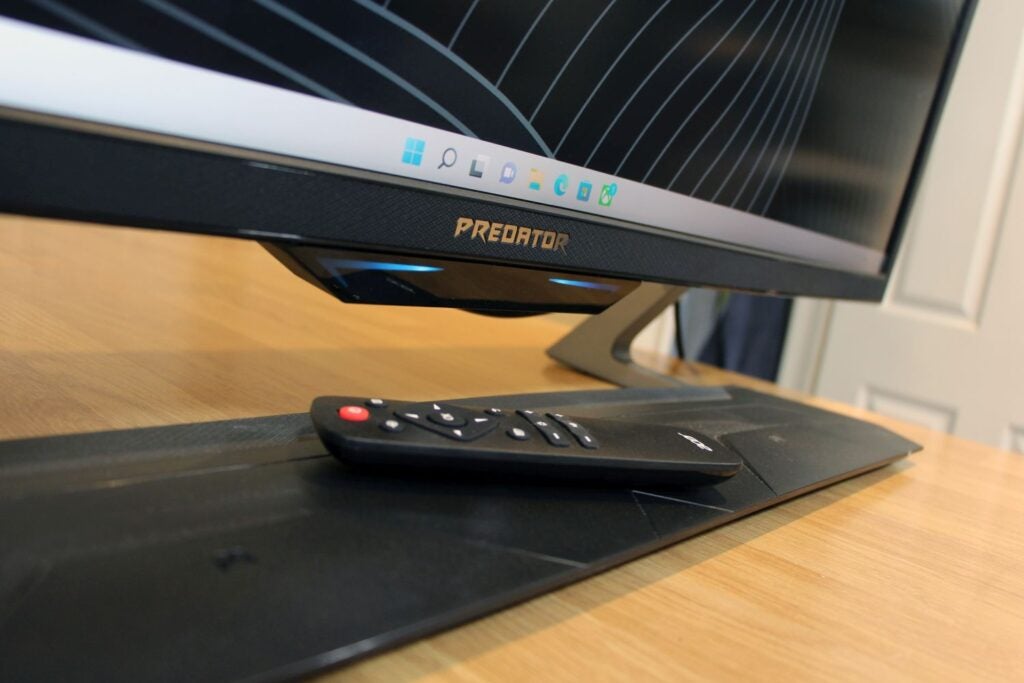
Instead, think of the Acer like a TV and you’ll have a better time. If you’re going to play games sat further away from the panel with a pad – like from your bed or sofa – then the display looks appropriately crisp. If you want to sit at your desk, you should use the VESA mounting to place it against your wall rather than actually on the desk itself.
The 4K resolution delivers crisp, expansive gaming visuals and the underlying panel uses VA technology with 10-bit colour, which should ensure excellent contrast. The refresh rate of 144Hz uses Nvidia G-Sync Ultimate. That’s a middling figure in today’s market, but it’s high enough for single-player gaming and casual eSports gameplay – and you’ll already need a powerful graphics card like an Nvidia GeForce RTX 3080 Ti or something even beefier to make the most out of this panel.
The Acer Predator CG7 has a 1ms response time, too, although it’s a VRB measurement so that’s not particularly impressive – certainly not fast enough to handle top-tier eSports gameplay in the same way as a 1ms GTG screen. And while the Acer supports VESA DisplayHDR 1000, just like the Asus, that standard pales compared to the HDR hardware found in similarly-priced TVs.
Good features elsewhere bolster those solid internals. Around the back you’ll find an HDMI 2.1 input, which means the Acer works with future PS5 and Xbox Series X/S games that run at 4K and 120Hz. There are two DisplayPort inputs, too.
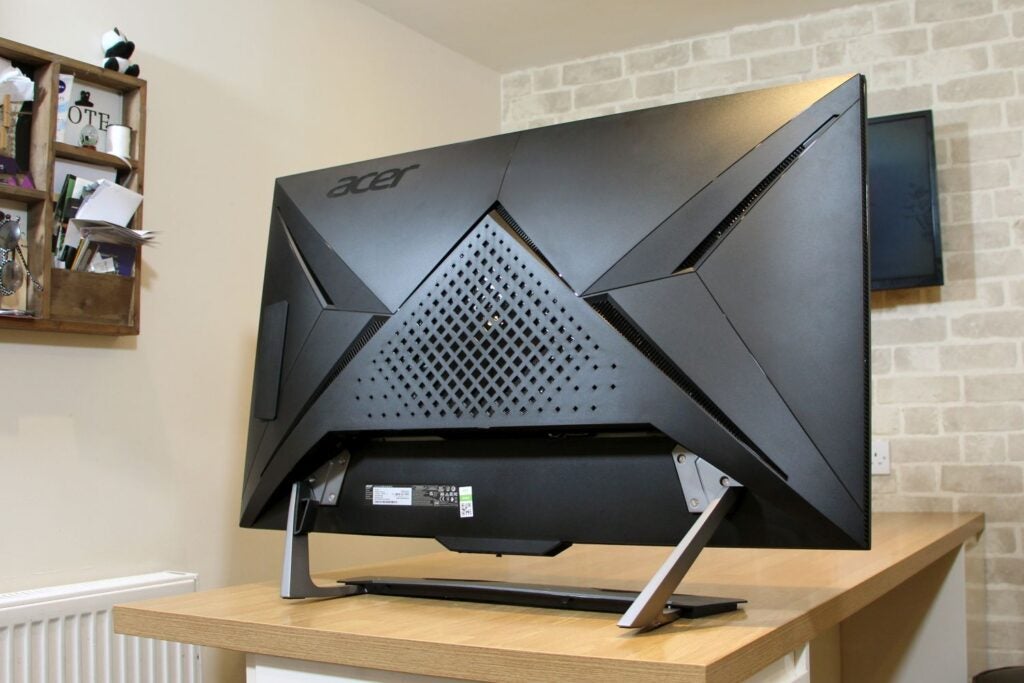
The rear serves up two full-size USB ports and a Type-C connection that can charge phones and pads, and on the side there are two more USB sockets and extra HDMI inputs. It’s great connectivity – it means you can easily attach controllers, peripherals and multiple input devices to this display.
Elsewhere, the Acer has a remote control to allow for easier adjustment, and the panel has an ambient light sensor for brightness adjustment. Audio comes from a pair of 10W speakers, and they’re actually decent – incredibly loud and punchy, and easily usable for games, albeit with a bit too much bass.
There are other areas where the Acer is not as impressive. There is no adjustment on this display – not even forwards and backwards tilt or modest height movement – and that restricts the panel’s positional versatility.
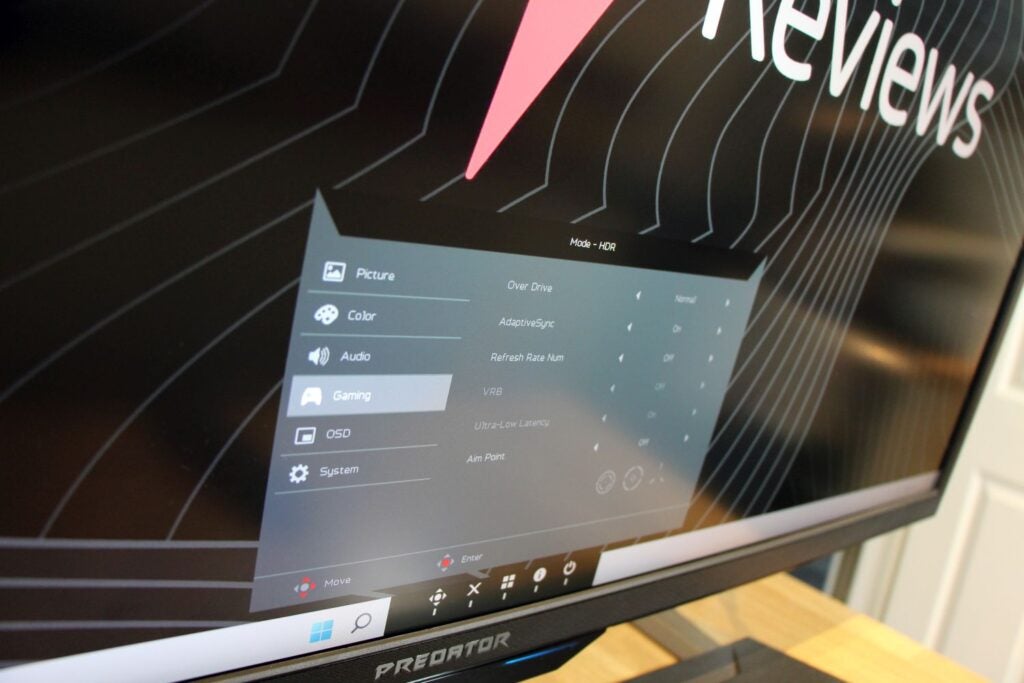
Its weight of 18.6kg is huge, and the on-screen display is basic, with the options you’d expect from a mainstream gaming display but nothing more. It’s not particularly fast, either. It looks poor compared to TV software, which is more responsive and has more options, especially regarding audio. And when people see your new “TV,” you might feel sheepish when you explain that it’s not got any smart apps and no tuner included either.
And while 43-inches is large enough to replicate a bedroom TV, it’s quite small when compared to many living room sets – if you’re willing to forego the gaming tech like the 144Hz refresh rate, you could buy a larger 4K TV for similar cash or even less, and a proper TV will likely have better menus and speakers alongside sleeker, more mature looks.
Image Quality
- Great contrast, impressive black levels and bold colours
- The 144Hz refresh rate is fine for mainstream single-player gaming
- Doesn’t handle HDR well
The Acer Predator CG7 pairs its impressive size with solid performance. Out of the box the panel’s brightness level of 205 nits is fine for everyday gaming, and it sits alongside a stonking black point of 0.05 nits – which means a contrast ratio of 4100:1. That’s vast, and it means that games have huge vibrancy, loads of depth and an impressive amount of nuance. It’s also a bit better here than the Asus, although there’s very little to choose between the two VA displays.
The panel’s delta E of 2.16 and colour temperature of 6338K are both great, and mean that colours on this screen are rendered with ample accuracy for any game. The Acer also maintains these figures at its maximum brightness, although in SDR mode the Asus is even brighter – worth considering if you want an image that’s so bold it’ll sear your retinas.
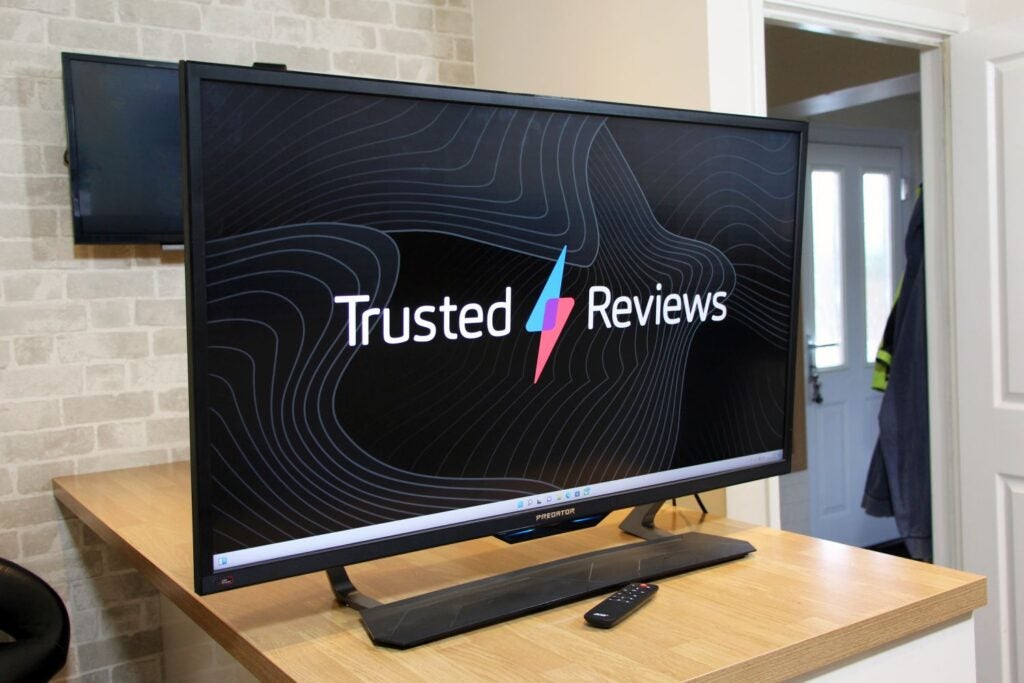
That core performance is rock solid, and those colour figures pair with sRGB coverage and volume levels of 98.1% and 127.5%. Those figures are good, and they ensure that it will produce every colour needed by mainstream games with plenty of vibrancy – although the volume figure does mean those colours veer on the saturated side.
The 144Hz synchronised refresh rate delivers motion that’s smooth and crisp enough for single-player gaming and casual esports, but that refresh rate is relatively low by modern standards, so the Acer encounters issues. There’s noticeable ghosting in darker areas, though, and I’d recommend using the Extreme overdrive mode, which delivers a modest but noticeable improvement to ghosting without introducing any other issues.
Ultimately, the ghosting is not a surprise on a 144Hz screen, and it won’t have a big impact in single-player games, casual competitive titles and when viewed from across the room – the exact way this panel is designed to function. But if you want extreme speed and pure, crisp imagery, you’ll have to opt for a smaller screen with a higher refresh rate.
There are some other areas where the Acer is a bit ordinary, too. In HDR mode its peak brightness level of 872 nits is reasonable, but the Predator doesn’t have the extreme black levels or sophisticated dimming required to deliver a big impact in games with HDR support, especially when compared to the best TVs.
Don’t switch over to the Acer’s various genre-specific modes, either: they all hinder the panel’s delta E and contrast performance.
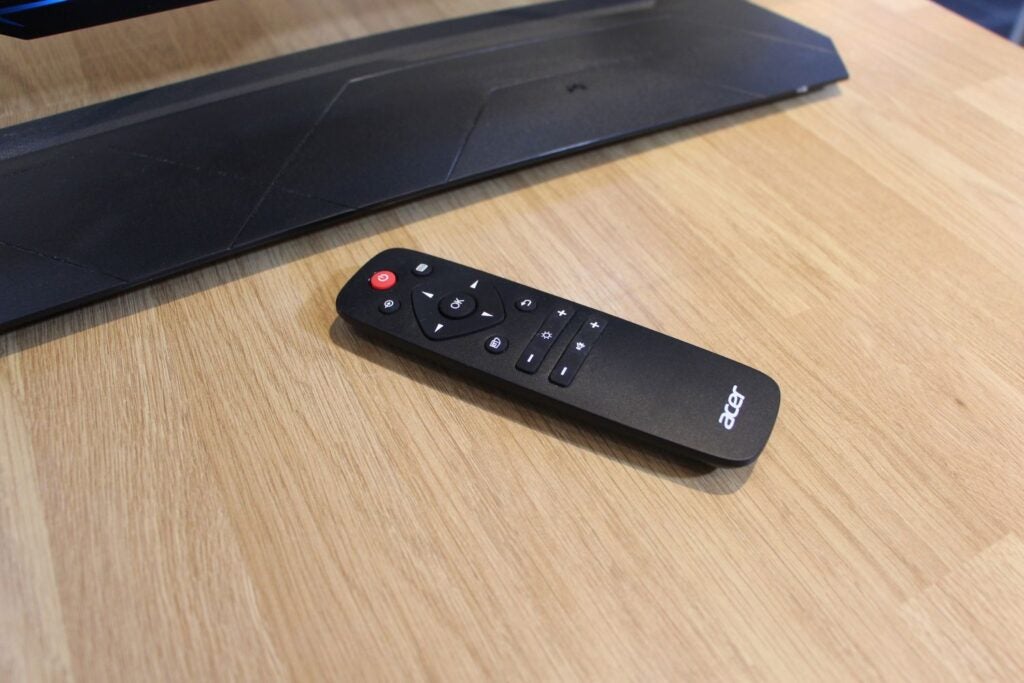
There’s little to choose between the Acer and its rival from Asus. The Predator has slightly higher contrast and both offer similar performance when it comes to colour, refresh rate and HDR. The Acer is cheaper, but the Asus has more adjustability.
Both also suffer slightly from their place in the market. For this money you could buy a smaller display with a higher refresh rate if you want something for eSports, but if you want a console-style experience then this cash could also deliver a larger TV with better HDR ability and a sleeker, more intuitive design – albeit at the expense of gaming features like a 144Hz refresh rate.
The Acer Predator CG7 delivers great colours, bold contrast and enough speed and smoothness for impressive single-player gaming alongside decent speakers and a sizeable 43-inch diagonal. The Asus may be marginally better when it comes to adjustment and brightness, but the Predator is cheaper and it’s a good option if you want a PC screen to provide a console-style experience.
That said, this is still an expensive panel, and for this kind of cash you could buy a bigger, sleeker TV with a better user experience – or a smaller, faster gaming panel. While the Predator CG7 is a good option for some people, it may suffer due to its awkward position in the wider market.
Latest deals
Should you buy it?
You’d love a big-screen experience for your PC games:
The Acer’s significant size and resolution alongside its great contrast and colours mean that the biggest and best single-player games look bold and vibrant on this display – they’re very immersive.
You want TV-style features or the speed for esports
A traditional TV will have better speakers, in-built apps and improved HDR performance, and smaller PC panels will be faster and have better response times – ideal for esports contenders.
Final Thoughts
The Acer Predator CG7 makes single-player games look brilliant thanks to its impressive contrast and colour performance, and its 4K resolution and size make it immersive – as long as your room isn’t huge. That said, you should look elsewhere if you want TV-style features, an even larger panel, or the speed needed for eSports success.
How we test
We use every monitor we test for at least a week. During that time, we’ll check it for ease of use and put it through its paces by using it for both everyday tasks and more specialist, colour-sensitive work.
We also check its colours and image quality with a colorimeter to test its coverage and the display’s quality.
We use as our main monitor for at least a week.
We used a colorimeter to get benchmark results.
Used our own expert judgement for image quality
FAQs
Along with the display itself, if you buy the Predator CG7 you’ll get two DisplayPort cables, the power cord, a USB 3.0 cable and a USB-C wire.
The Predator CG7 uses Acer’s standard consumer monitor warranty, which lasts for two years.


